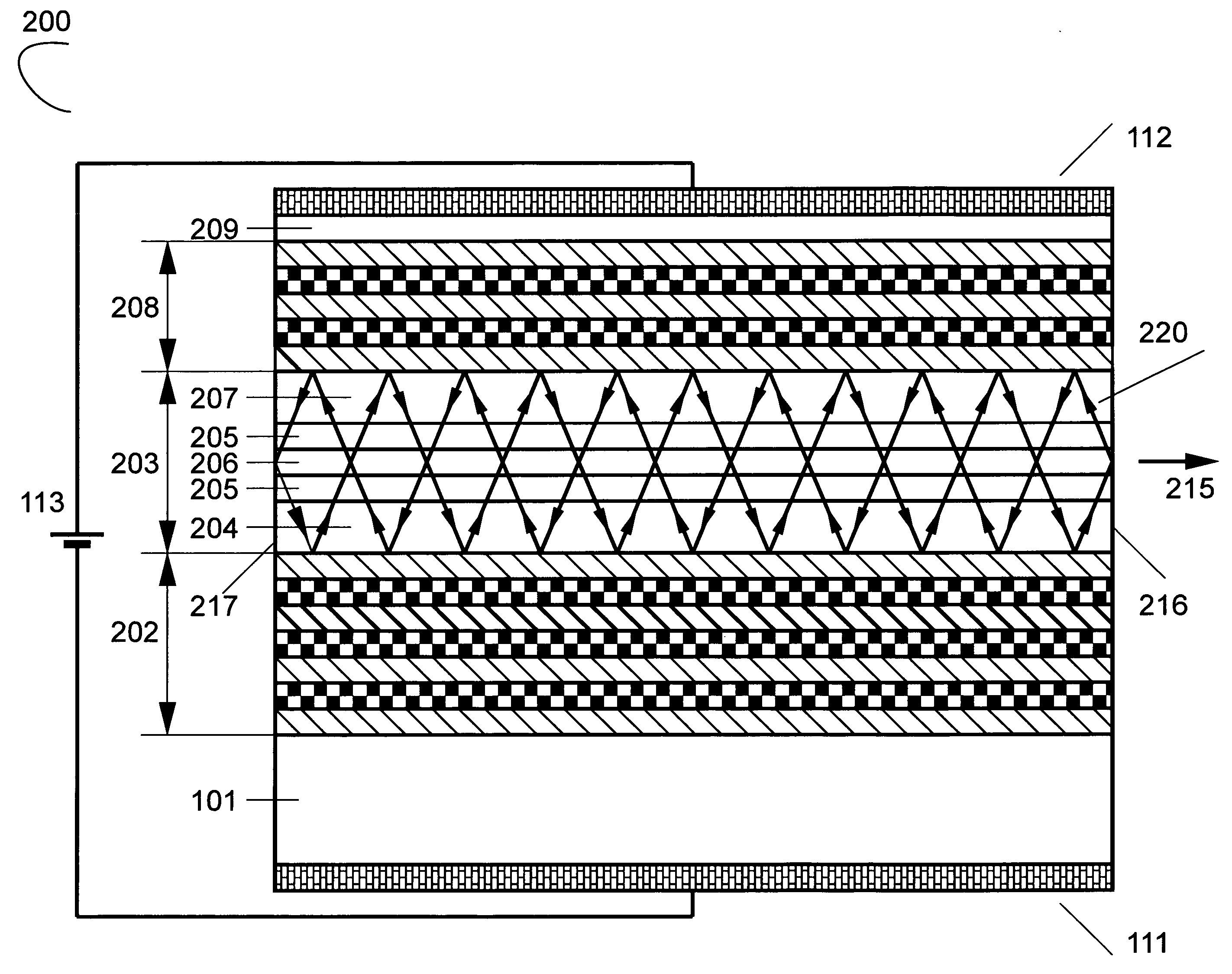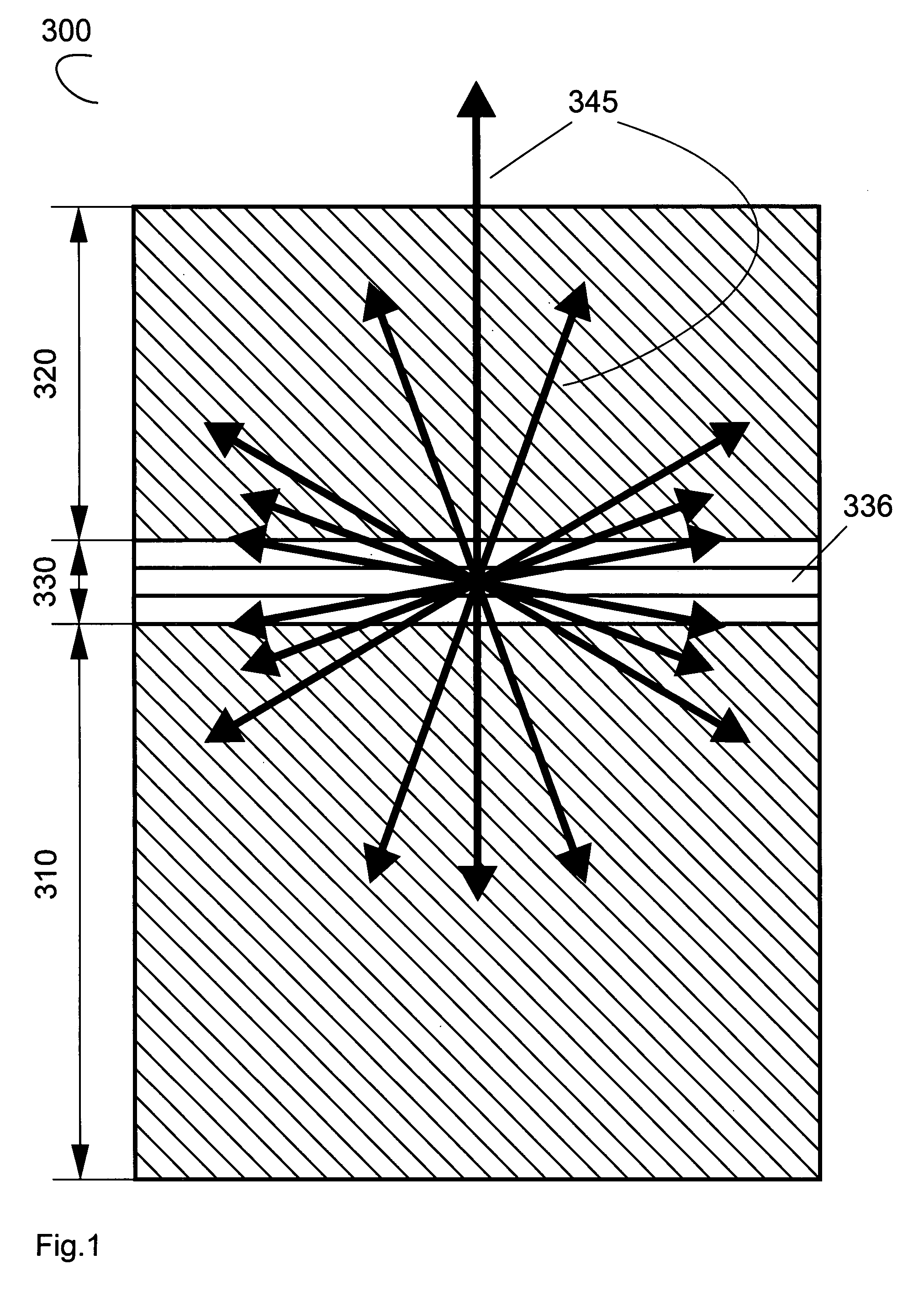Resonant cavity optoelectronic device with suppressed parasitic modes
a technology of parasitic modes and optoelectronic devices, which is applied in the field of ultrahigh-speed optoelectronic devices, can solve the problems and achieve the effect of reducing the effect of parasitic modes on the device performance and high reflectivity
- Summary
- Abstract
- Description
- Claims
- Application Information
AI Technical Summary
Benefits of technology
Problems solved by technology
Method used
Image
Examples
Embodiment Construction
[0067]The present invention provides a way to improve performance of light-emitting diodes, laser diodes, optical amplifiers and photodetectors by suppressing the undesirable radiative modes. The directionality, the efficiency and the modulation speed of the devices can be improved.
[0068]The basic approach to improve directionality at a certain wavelength is to place the source of the light in a multilayer epitaxial structure. FIG. 4(a) shows schematically a semiconductor structure (400), wherein an optical oscillator (460), emitting light having a certain photon energy which corresponds to the wavelength of light in the vacuum λ0, is inserted into a medium (450) with modulated refractive index, i.e. into a multilayer structure. The multilayer structure (450) is selected such that light in some directions (435) exits the crystal with high probability, whereas light does not come out in some other directions (465).
[0069]FIGS. 4(b) through 4(f) illustrate the possibility to forbid tra...
PUM
 Login to View More
Login to View More Abstract
Description
Claims
Application Information
 Login to View More
Login to View More - R&D
- Intellectual Property
- Life Sciences
- Materials
- Tech Scout
- Unparalleled Data Quality
- Higher Quality Content
- 60% Fewer Hallucinations
Browse by: Latest US Patents, China's latest patents, Technical Efficacy Thesaurus, Application Domain, Technology Topic, Popular Technical Reports.
© 2025 PatSnap. All rights reserved.Legal|Privacy policy|Modern Slavery Act Transparency Statement|Sitemap|About US| Contact US: help@patsnap.com



